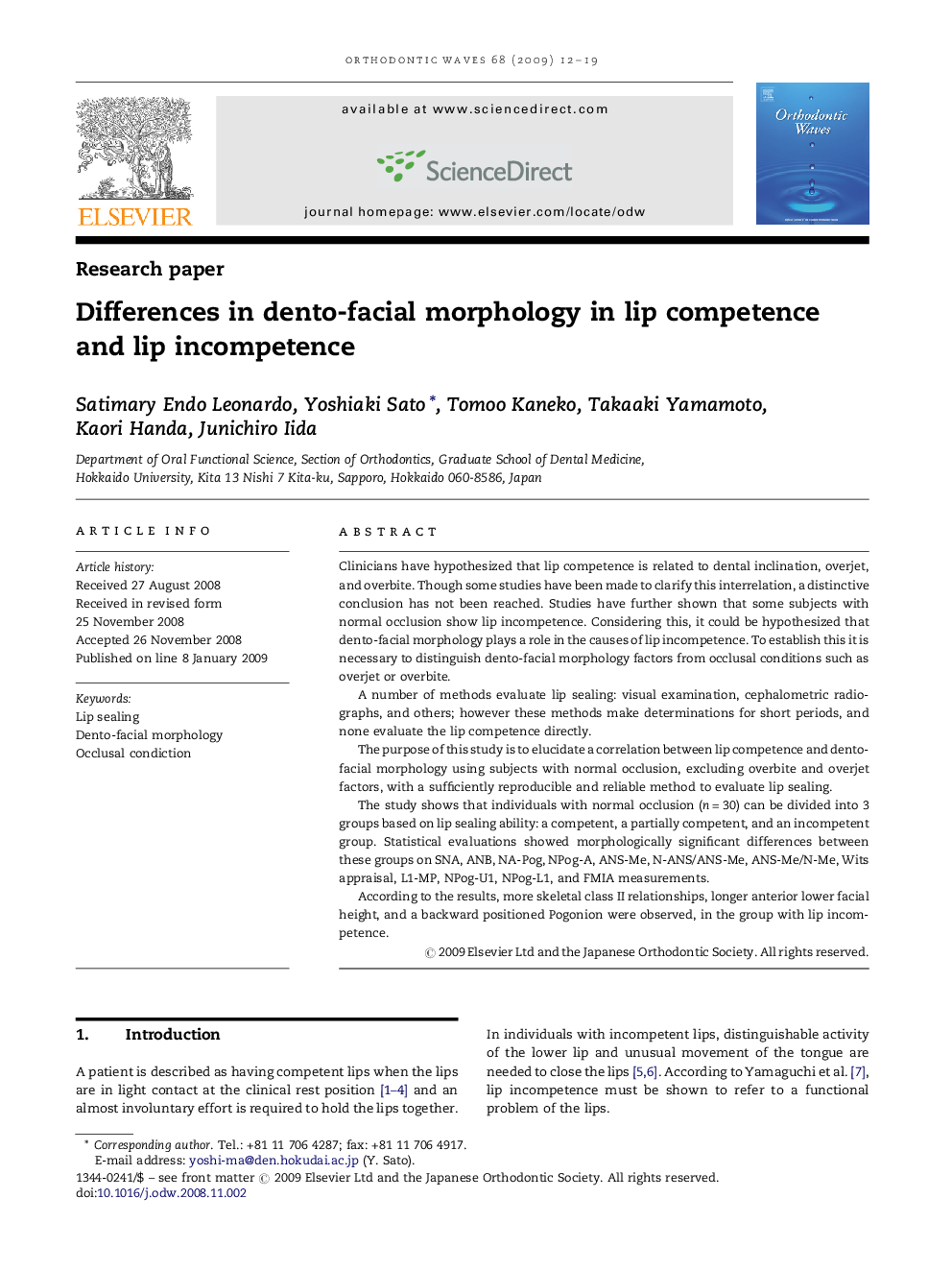| Article ID | Journal | Published Year | Pages | File Type |
|---|---|---|---|---|
| 3170568 | Orthodontic Waves | 2009 | 8 Pages |
Clinicians have hypothesized that lip competence is related to dental inclination, overjet, and overbite. Though some studies have been made to clarify this interrelation, a distinctive conclusion has not been reached. Studies have further shown that some subjects with normal occlusion show lip incompetence. Considering this, it could be hypothesized that dento-facial morphology plays a role in the causes of lip incompetence. To establish this it is necessary to distinguish dento-facial morphology factors from occlusal conditions such as overjet or overbite.A number of methods evaluate lip sealing: visual examination, cephalometric radiographs, and others; however these methods make determinations for short periods, and none evaluate the lip competence directly.The purpose of this study is to elucidate a correlation between lip competence and dento-facial morphology using subjects with normal occlusion, excluding overbite and overjet factors, with a sufficiently reproducible and reliable method to evaluate lip sealing.The study shows that individuals with normal occlusion (n = 30) can be divided into 3 groups based on lip sealing ability: a competent, a partially competent, and an incompetent group. Statistical evaluations showed morphologically significant differences between these groups on SNA, ANB, NA-Pog, NPog-A, ANS-Me, N-ANS/ANS-Me, ANS-Me/N-Me, Wits appraisal, L1-MP, NPog-U1, NPog-L1, and FMIA measurements.According to the results, more skeletal class II relationships, longer anterior lower facial height, and a backward positioned Pogonion were observed, in the group with lip incompetence.
